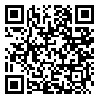Volume 14, Issue 1 (2014)
MCEJ 2014, 14(1): 109-119 |
Back to browse issues page
Download citation:
BibTeX | RIS | EndNote | Medlars | ProCite | Reference Manager | RefWorks
Send citation to:



BibTeX | RIS | EndNote | Medlars | ProCite | Reference Manager | RefWorks
Send citation to:
Mamdoohi A, Mohammadi Hazaveh A, Fallah Zavareh M. Aberrant Driving Behavior of Iranian Drivers:
An Internet-Based Survey. MCEJ 2014; 14 (1) :109-119
URL: http://mcej.modares.ac.ir/article-16-1835-en.html
URL: http://mcej.modares.ac.ir/article-16-1835-en.html
1- Tarbiat Modares Uni
2- Tarbiat Modares University
2- Tarbiat Modares University
Abstract: (5947 Views)
Road crashes cause more than 20 thousand fatalities each year in Iran. Human factors consisting of driving styles and skills have been recognized as important contribiuting factors in most traffic crashes. Focous on driving behavior has been the subject of many researches. Driver Behavior Questionnaire (DBQ) in this regard is a relatively new, important and widely used instrument, devised to identify the components of the structure of aberrant driving behaviors. Surveys based on DBQ, urges respondents to self-report the frequency of aberrant driving behaviors during a specific period of time. Investigation of driving styles is estimated to be the subject of more than 170 researches since DBQ was first by Reason et al in the 90’s. Since then, many researchers have employed the original DBQ or a modified version, either to explore behavioral components (exploratory approach) or to confirm a given setting based on authors’ theories or observations, in group(s) under the study (confirmatory approach). Lack of exploratory analysis and spatial dispersion of respondents in the previous domestic researches, motivated the authors of this paper to conduct a new survey to investigate aberrant driving behaviors among Iranian drivers applying exploratory approach. The original DBQ was modified, validated and dispersed between Iranian drivers through an internet-based survey. Recent increase in the number of internet users in Iran, more interactions between respondants and the questionnaires, the power of self-administration, massive reductions in cost and time over interviewer-administered surveys, building a database, were among factors yielding hope that the sample would be comprehensive enough to comprise different groups of drivers. Using social networks and email services, the proposed questionnaire was exposed to internet users and a sample of 213 drivers (165 males and 48 females) from 40 cities inside and outside Iran, filled out the 37-item DBQ. Principal Component Analysis (PCA), with Varimax Rotation implied, a five-factor structure: “Push and Speed Violations”, “Disregarding the Regulations”, “Lack of Concentration while driving”, “Aggressive Violation” and “Lapses and Error” for Iranian drivers. These components account for 42.2 percent of the total variance. It is worth noting that the distinction between different kinds of violation and lapses and error support the fact that this new structure is consistent with the previous studies. Moreover, using cell phone while driving (both sending texts and talking), aggressive violations and push and speed violations are the most frequent aberrant driving behaviors. Compared to the other countries, drivers in Iran reported more violations than drivers in industrialized countries and fewer violations than Asian drivers. Results also show that unlike industrialized countries, Iranian drivers reported more aggressive violations than ordinary violations.
Keywords: Aberrant driving, Driver Behavior Questionnaire, Internet-Based Survey, Principal component analysis
Received: 2014/09/23 | Accepted: 2014/05/22 | Published: 2014/09/23
| Rights and permissions | |
 |
This work is licensed under a Creative Commons Attribution-NonCommercial 4.0 International License. |







